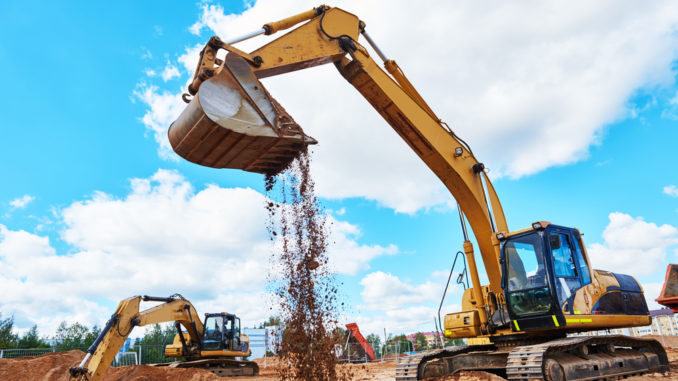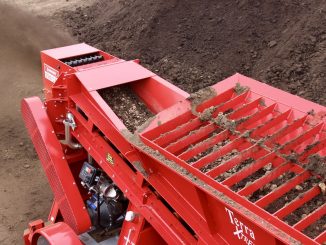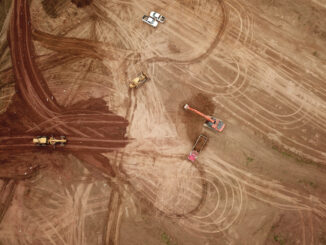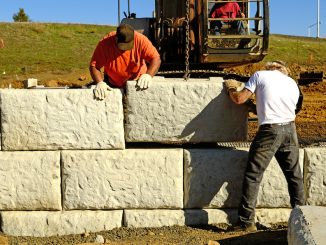
Before the excavation begins, a few general preparation tasks need to be addressed to ensure the quality and performance of the project. These preparation tips should be used before all grading, excavation, or embankment work that is done on the job site.
Initial Preparation
Here are a few things that might be required, depending on the conditions of the job site:
- Grubbing and Cleaning: This work might include a variety of tasks to remove organic and perishable materials, including agricultural debris, weeds, sod, stumps, tree roots, and more.
- Testing Cross Sections: Various sections of the site need to be tested and checked to understand the composition of the earth. These samples are gathered and checked according to the details in the construction plans.
- Scalping or Stripping: After the previous two steps are done, then the contractor can move forward with scalping where the excavations will be completed. This process is also commonly referred to as stripping. The top 4 inches of soils need to be removed so that there is no decayable vegetation to be included in the embankment. Some job sites require more than 4 inches of removal to uncover the suitable soil that can be used for a strong foundation. It is essential to maintain close inspection during all grading operations to identify the unsuitable All perishable objects are taken from the job site and set aside for proper disposal.
- Ground Compaction: If ground depressions are left behind due to the construction equipment used for the materials removal, then those areas need to be filled with acceptable materials based on the embankment limits listed in the plans. Additionally, compaction might be required to create the right density for the project, usually using a roller to compact the upper 6 inches of soil.
- Proofrolling: The last step is proofrolling, which is done with a pneumatic tire roller. For this step, the tire size must be 7:50 by 15 inches. Or, other approved equipment could be used based on the circumstances, such as a tri-axle dump truck that is fully loaded. The process is necessary to identify yielding and spongy materials that haven’t compacted correctly. If soft areas are identified, then they need to be removed and filled in with the appropriate materials. Usually, the spongy areas can be found with visual detection, and judgement needs to be used to find the areas based on the target height of the embankment in that area.
Once you are done with these five steps, the site should be free of unstable or soft areas. It means that the location is ready for new embankment placement.
Common Excavation and Embankment Practices
Generally, there is excavated material that can be suitable for embankment construction on different parts of the job site. In this situation, the excavated material should be used before any borrow material is brought to the job site.
A good plan is to excavate the ditches first so that the excavated materials can be used from the ditch cuts. Additionally, having the ditches in place is important to support the drainage that is needed for the embankment area.
Temporary Steps for Erosion Control
When the ditches are in the place, the next step is the immediate placement of devices to help with temporary erosion control. Delaying this effort could result in pollution in the nearby rivers, streams, and drainage ditches. Here are a few examples of common temporary sediment and erosion control methods:
- Protection around the perimeter
- Creating a drainage barrier at swale
- Slope drains and interceptor ditches for slope protection
- Controlling sediment in side ditches, riprap ditch check, straw bale ditch check, ditch sediment trap, or culvert pipe protection
- Sediment basic
- Drop inlet protection or curb inlet protection
These techniques are used for as long as necessary until the permanent erosion control features can be placed on the site. The plan should include these details so that the erosion control devices are outlined in the construction plans. It is also possible to submit an amended erosion control plan as needed, but a better strategy is to include all of the details in the original plans.
The technician carries the responsibility to maintain the erosion control devices. At the same time, regular inspection is needed, particularly during times of rainfall that could impact the performance of the devices. Depending on the type of devices that are used, they might need to be cleaned or reconstructed if the performance was affected by weather conditions.
Lifts for Embankments
While the embankments are being created, there are factors that need to be considered for the placement of the lifts:
- It is necessary for the lifts to be placed so that they have a transverse extension over the whole embankment area located between the stakes. This process is important to be sure that the outside slopes and middle areas of the embankment area are compacted. The critical factors of this step increase with projects that have higher fill lines.
- Regular checks are required for the fill Failing to maintain these checks could result in bellied or fat slopes due to the excess materials. When these problems develop, then it means that the problems need to be corrected to ensure the performance of the excavation and slopes.
Equipment Used for Placing Embankment
Four main categories of equipment might be used when placing embankment:
- Hauling Equipment: This method is determined based on a variety of factors, including the type and source of the materials, obstacles that need to be addressed, and the availability of the equipment. Usually, hauling equipment includes quarry trucks for rock excavation, earthmovers for hauling and placement of soil materials adjacent on the contract, or dump trucks if the borrow material is coming from a remote source.
- Spreading Equipment: Once the materials have been placed on the site, then it is time to use spreading The embankments need to be constructed in a way that creates uniform layers. Several types of equipment can be used to achieve this result, including bulldozers, motor graders, or sheepsfoot compactors with a blade. Sometimes, earthmovers can be used depending on the suitability of the soil.
- Compacting Equipment: Now that the materials are layered in place, it is time to compact the soil to create a solid foundation. The necessary equipment varies depending on the site conditions and the contract details. Common types of contractors include mechanical vibrators or tamps, bulldozer or other crawler-tread equipment, sheepsfoot or static tamping rollers, vibratory tamping roller, smooth drum vibrator roller, three-wheel roller. Conditions, type of materials, size of the embankment, and equipment availability will affect the contractor’s preference for compacting equipment.
Overview of Compactor Type Equipment
If the project requires the placement of granular materials for the embankment, then it is often best to use smooth drum vibrator or three-wheel rollers instead of the tamping equipment. Also, some areas might not be accessible for conventional rollers, so it might be necessary to use a dozer. Shale embankments usually need tamping vibratory rollers.
When clay soil materials are used for the embankment, then it is necessary to have tools that can break up lumps, clods, or large slabs. Once these materials have been broken up, then the site can be compacted. Often, a sheepsfoot roller is used to break it up, although disking is another popular method.
Here is an overview of the type of equipment that is often used for different site materials:
- 3 Wheel: Can be used for all soils, up to a maximum lift depth of 8 inches.
- Crawler-Tread: Can be used for aggregates and rock, usually with a lift depth of no more than 6 inches. Look at specifications for rock materials.
- Mechanical Tamp or Vibratory: Can be used for both soils at a 6-inch maximum or aggregates at a 4-inch
- Smooth Drum Vibratory: Can be used for all soils, including aggregates. General soils can be up to 6 inches maximum. But, aggregates have a maximum of 6 inches for the lift depth.
- Tamping-Foot: Can be used for shale or soil, with a lift depth based on the length of the tamping foot.
The goal is to choose the compacting equipment that will create the best uniformity for the target density of the embankment.
What are the initial preparation steps required before excavation, and why are they crucial?
Initial preparation includes tasks like grubbing, testing cross sections, scalping, ground compaction, and proofrolling to ensure stability, remove perishable materials, and create a strong foundation.
What equipment and practices are involved in creating embankments, and how are erosion control measures implemented during construction?
Equipment such as hauling, spreading, and compacting equipment is used for embankment construction, and erosion control measures like perimeter protection, slope drains, and sediment controls are implemented during construction until permanent features are in place.












































